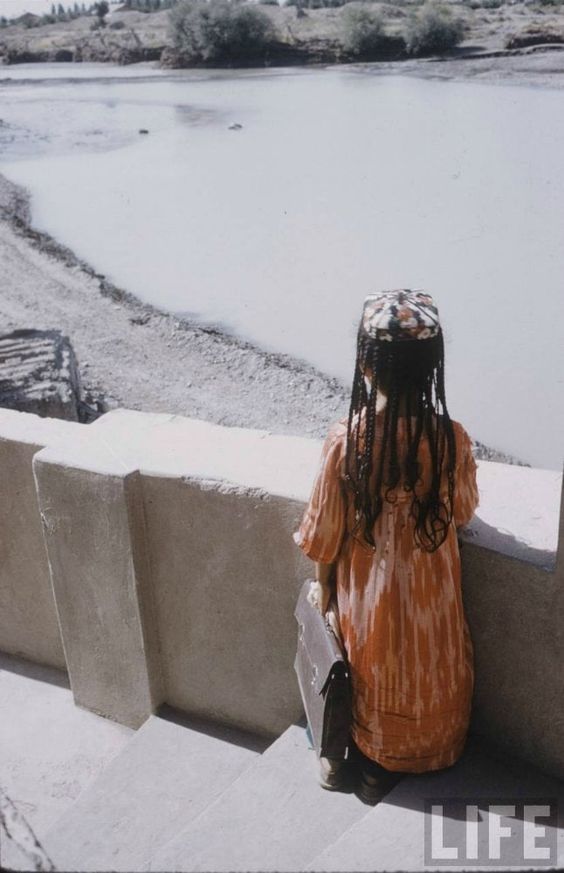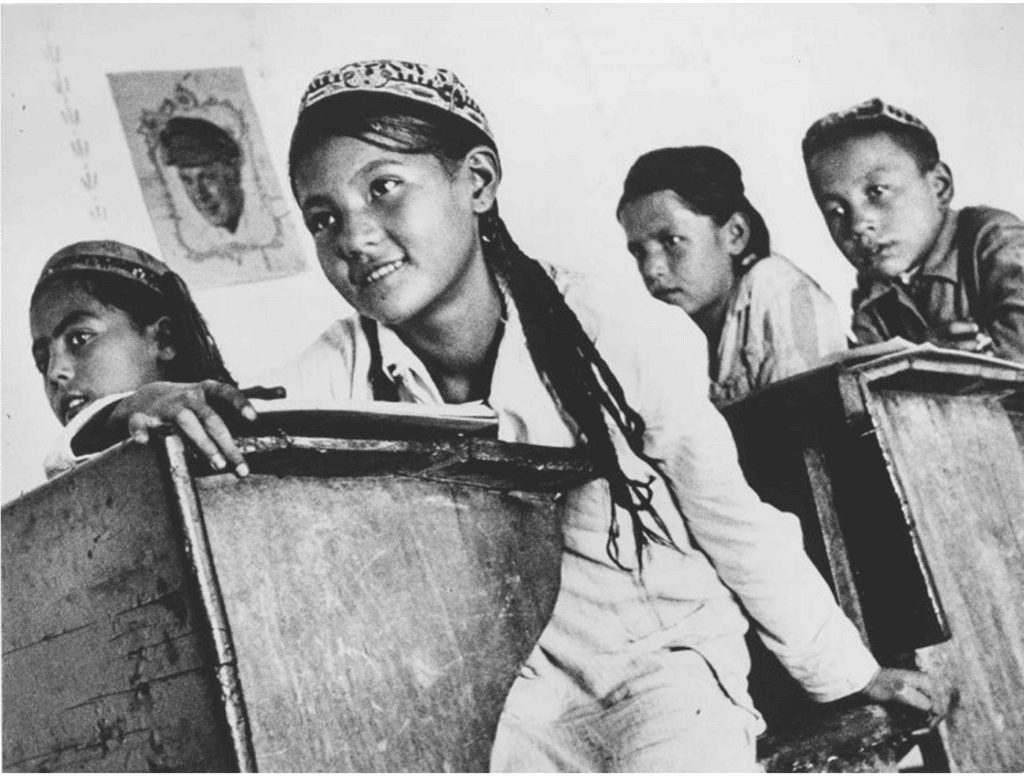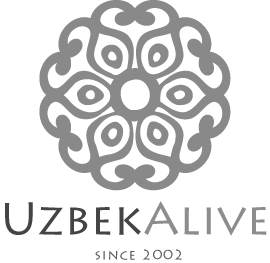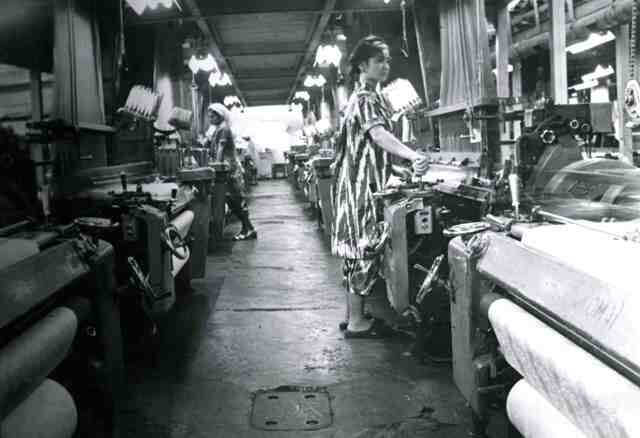
We love this photo! It is from “Life” magazine archives and was taken in Tadjikistan in 1958 by an American photographer Howard Sochurek during his travels in the former USSR.
As a woman born and raised in Soviet Central Asia, this photo resonates deeply with me. It evokes a rush of nostalgia and fills my heart with warmth. It beautifully captures the essence of that era, speaking volumes about a social landscape of those times.
In 1958, the girl in this photo resembles how our mothers appeared when they attended Soviet schools: dressed in ikat dresses, hair traditionally braided in many braids, and carrying school bags far too large for their height and age. There was a clear determination to study!
“Learn, learn and learn”
“Learn, learn and learn” is a slogan attributed to Vladimir Lenin. It was an educational motto during the entire Soviet period, especially in early decades of the Soviet Union, when the level of mass illiteracy was very high. There was “Learn, learn and learn” written practically in every classroom of every school. It is a very wise and timeless slogan. If we draw a parallel with the 21st century and the way things are changing “Learn, learn and learn” is a slogan for our age too.

1930s. In school. Photo by Max Penson.
Equal education regardless of gender
There are million sides to any story. The same is true to the story of the Soviet Union. There were things which clearly did not work. Meanwhile, other aspects of the Soviet regime remain an envy of any developed country to this day. That is a free and mandatory education for everyone. Boys and girls! No exceptions! Imagine what a change in people’s mentality the country had to go through, especially in 1920-1930ies.
In pre-Soviet times girls did not have access to a public education. The life path for a girl was quite standard – grow up, learn to maintain a household, get married, have kids, be a good wife and a caring mother and be dependent on your husband. Being a wife and a mother is a full time job of itself but the problem was that the path was the only way to live life. There was no room for deviation from the standard. Meanwhile, the Soviet education system allowed for a girl to study, to have a job and to have a different path, if she chooses so.
Ikat dress made of industrially manufactured ikat fabric
In 1958 Central asian’s ikat production was entirely in hands of the Soviet state. The Soviet ikat patterns were simplified and practical. The Soviet government did not have enough resources to support handmade production – they had millions of poor people to feed and to educate. Hence, handloom woven silk Ikats which involved complex and time consuming processes were banned. All ikat artisans joined state factories with a limit on creativity set by the State. We have a wonderful post going deeper into historical aspects of ikat production during the Soviet era at this link. This specific dress on the girl most likely was made of the ikat fabric which was woven on an industrial machine. It was probably wide because industrial machine allowed for such width. It was probably made of cotton.

